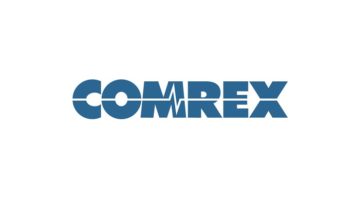Communications is our business. In broadcasting we use whatever tool works best to make that vital connection. What communication tool has had such an effect on our business – or business in general, or society – as cellular communications?
Time passes quickly when you’re having fun, or working your butt off; but can it be that we are coming up on a quarter-century of cellular phones?
Bob Barnett, an executive of Ameritech, made the first cellular call from a car just outside of Soldier Field in Chicago on Oct. 13, 1983. The phone he used that day had all the critical features of the system we have now: portability, multiple hand-off sites, user commanded access to the wireline network, central computer control of both base and user phone frequency as well as power control, billing, etc. This wasn’t even your older brother’s two-way radio or SMR but a totally new animal.
The technological developmental pace that led to the present worldwide cellular/PCS system is amazing. Wireless communications has been with us in the United States just since that day in 1899 when the physics department at Notre Dame sent the first Morse signals across the street to St. Mary’s College, emulating Marconi’s seminal work in Europe.
The state-of-the-art communications we enjoy today did not leap forth fully grown from the head of Jupiter but progressively, each advance built on the last: Morse to amplitude modulated voice, to frequency modulated voice, to FM two-way, to FM analog cellular, to digital cellular/PCS and hopefully onward.
Early adopters of cellular/PCS recognized the value and luxury of a large signal footprint and immediate connection to the wireline network. In broadcasting, sales people and managers were the first users, who sought to make business more efficient, followed by news people, who wanted actualities with dispatch.
With various digital compression schemes, programmers now schedule remotes of acceptable audio quality, reliably and casually, from just about anywhere via cellular. After twenty-five years the footprint of cellular/PCS is so large that nearly no origination location is beyond it.
It wasn’t always so
Remotes have long been a staple of radio. Before cellular, programming from remote locations came to the station via radio link, dedicated telephone circuit or, as a last resort, a dial-up POTS line.
Radio links (recall our Marti “milestone,” RW May 25, 2005, page 18) were usually one-way. Two-way radio links were a luxury most stations couldn’t afford, as this feature doubled the equipment cost. You knew you were in the “big time” if you had a two-way radio system.
Usually the folks at the remote would set up, turn on the transmitter and then, assuming they were getting through to the studio, ask the person at the board to use a code word on air, do an ad-lib promoting the upcoming remote or break programming to let them know they had a connection.
Most stations chose to break the programming quickly, which could be done in short order. The most dreaded signal you could hear in the earpiece of your little transistor receiver was a “double break,” which meant that there was a problem. You needed to find a POTS phone and call the studio.
Metallic pairs from the telephone company – just a pair of wires straight from the remote to the studio – usually sounded dull over a couple of miles in length but they did offer the luxury of two-way connection.
The board operator could send a sample of the program feed down the wire to the remote; rudimentary intercom was possible for cues and interaction right up to the moment when you sent programming for air.
When all else failed, you could use a POTS line for connection, especially for news actualities. The usual gambit was to make the connection to the studio and then unscrew the mouthpiece on the handset. After removing the mic cartridge, you would clip onto the mic posts the output of your mixer or cassette recorder.
It didn’t sound very clean or hi-fi, but a POTS did work. I have done innumerable road basketball games and racing events by commandeering a pay phone for three or four hours. That’s a lot of quarters.
The flexibility, reliability, coverage and convenience of cellular compared to what came before are stunning. And as the cost of cellular service goes down, overall use by every staff member and department has gone up and applications have expanded. Right now, imagine your station without cellular. Gee it would feel like 1983.












